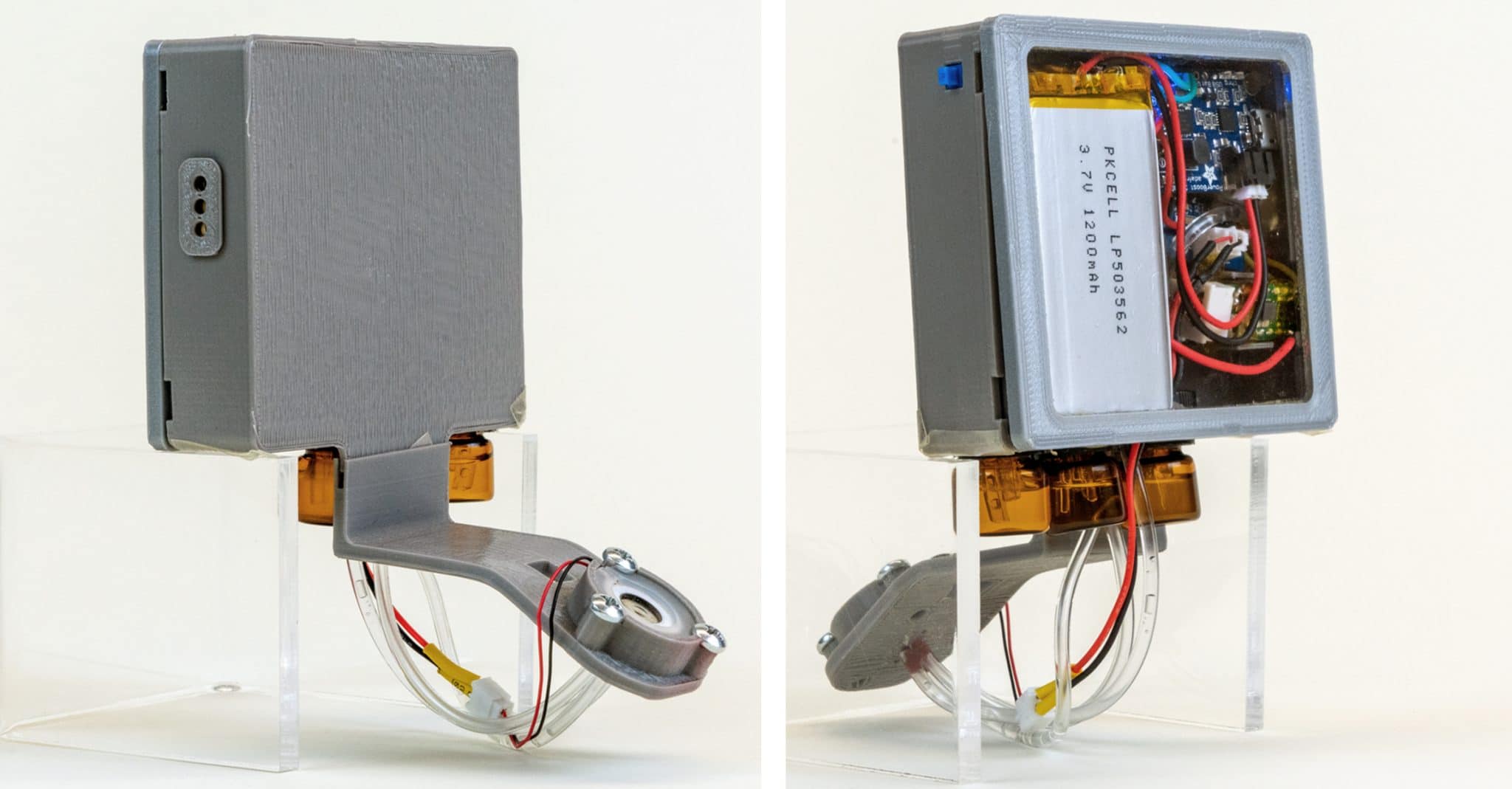A recent project by college students demonstrates a new method of emulating hot and cold sensations while in VR, using a thermal display emitting specific scents that trigger the feeling of a change in temperature.
The device is the work of of Jas Brooks, Steven Nagels and Pedro Lopes from the University of Chicago. It uses chemicals that stimulate nerves in our noses to emulate the feeling of warmth or coldness. This ‘thermal display’ is a small device that attaches itself to the front of a VR headset and emits scents, via a spray in small amounts, directly under the nose. These scents stimulate the trigeminal nerve in our nose, allowing a miniscule amount of the odorless ingredients to make the user feel hot or cold.
In an example video, the device sprays the chemicals to trigger a feeling of warmth when near a fire and a feeling of cold when out in the snow. The intensity of the feelings can also be adjusted by spraying more or less of the chemicals, and can be mixed in with other scents for a higher level of immersion with added smells.
The device runs via Bluetooth and runs on only a small amount of power. It features removable reservoirs for the chemicals, allowing each of them to be easily replaced. The first two reservoirs contain the chemicals required for hot and cold temperature changes (capsaicin and eucaluptol, respectively) and the third is a scent that can be mixed in with the other two chemicals for a certain smell to increase immersion.
The project proposes an interesting solution to the problem of recreating accurate temperature changes while in a VR environment. While the technology is unlikely to see widespread use in virtual reality products anytime soon, it does offer a new way of thinking around the implementation of temperature that could become useful in the near future.
The post University Project Shows Hot And Cold Temperature Change VR Research appeared first on UploadVR.
Source: University Project Shows Hot And Cold Temperature Change VR Research




